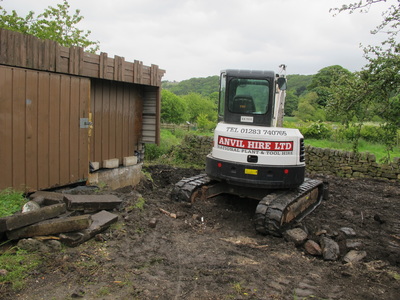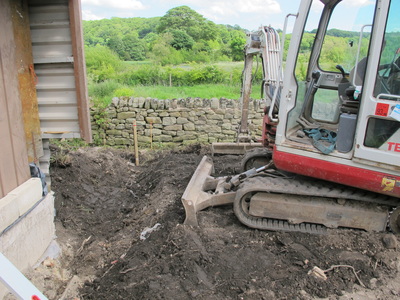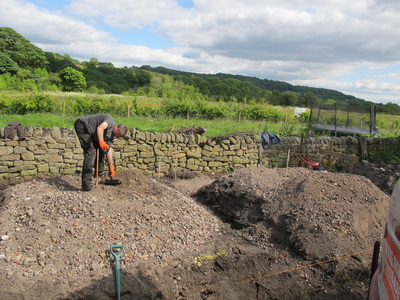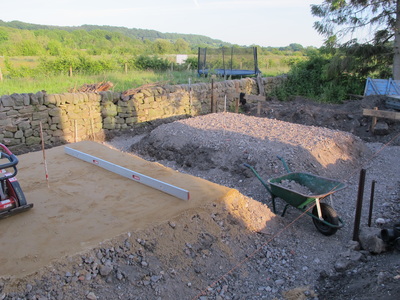|
First post! Jumping back a bit here to early June. We hired a 3tonne digger & got a 5tonner - great for pulling tree stumps, but access got a bit tight and we swapped down after a couple of days. The bearing capacity of the ground isn't great, so the raft foundation spreads the load of the building over the whole area. The edges and a central strip of the raft are thickened, stiffening it and taking the concrete down to below a level where frost damage could occur. Why concrete? Isn't it evil? Because of our location on the flood plain of the River Derwent we try to build in resilience. The best thing to do would probably be to build a boat and wait, but the planning authority might not like that. Our budgets won't stretch to a floating house, so if we used timber at low levels, there is a danger of it getting wet. Layers of insulation and damp proof membranes would impede drying out putting it at risk of rot, insect and fungal attack. So at low levels we stick to dense materials such as concrete, and use closed cell type insulation. Building to last is an important part of our environmental ethos. Blinding Aggregates!
Below the concrete our Structural Engineer specified a 150mm thick layer of aggregate, well compacted. This is often virgin limestone from one of the many quarries in the Peak District - some of these are responsible for the destruction of important habitats and landscapes, so we specified crushed recycled construction waste. This is all squashed down with a petrol powered Plate Compactor and covered with a 25mm thick layer of Sand Blinding, giving a smoother layer and covering any pointy bits. The more precisely the foundation profile can be formed, the more precisely the volume of concrete required can be calculated, reducing waste.
0 Comments
Leave a Reply. |
AuthorMike Hawkins is a co-op member and is responsible for the design and management of the build. He'll also live in it when its finished - hooray! He teaches future architects at Leicester DeMontfort and Birmingham City universities. Archives
November 2017
Categories |
This site is under construction






 RSS Feed
RSS Feed
